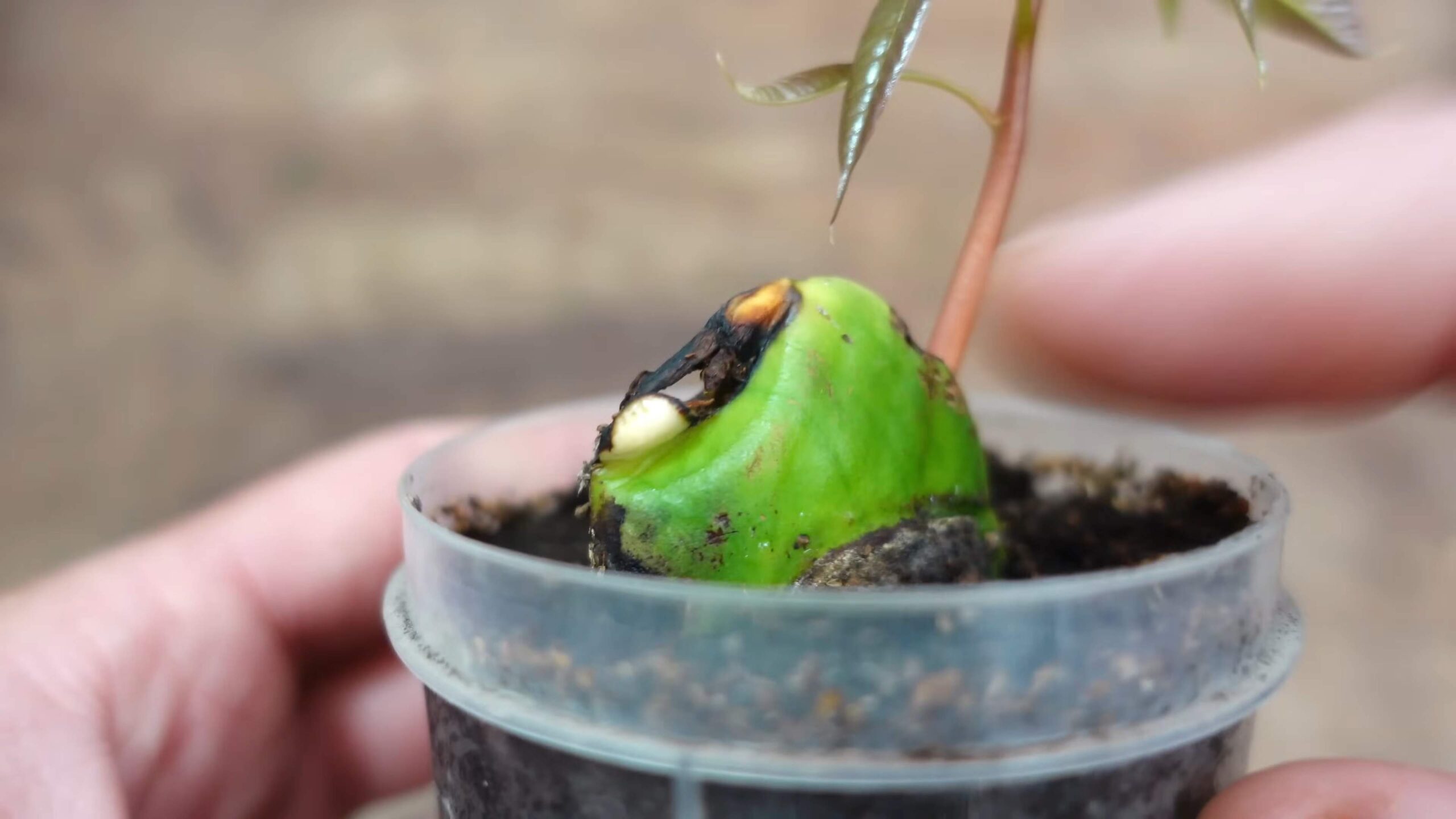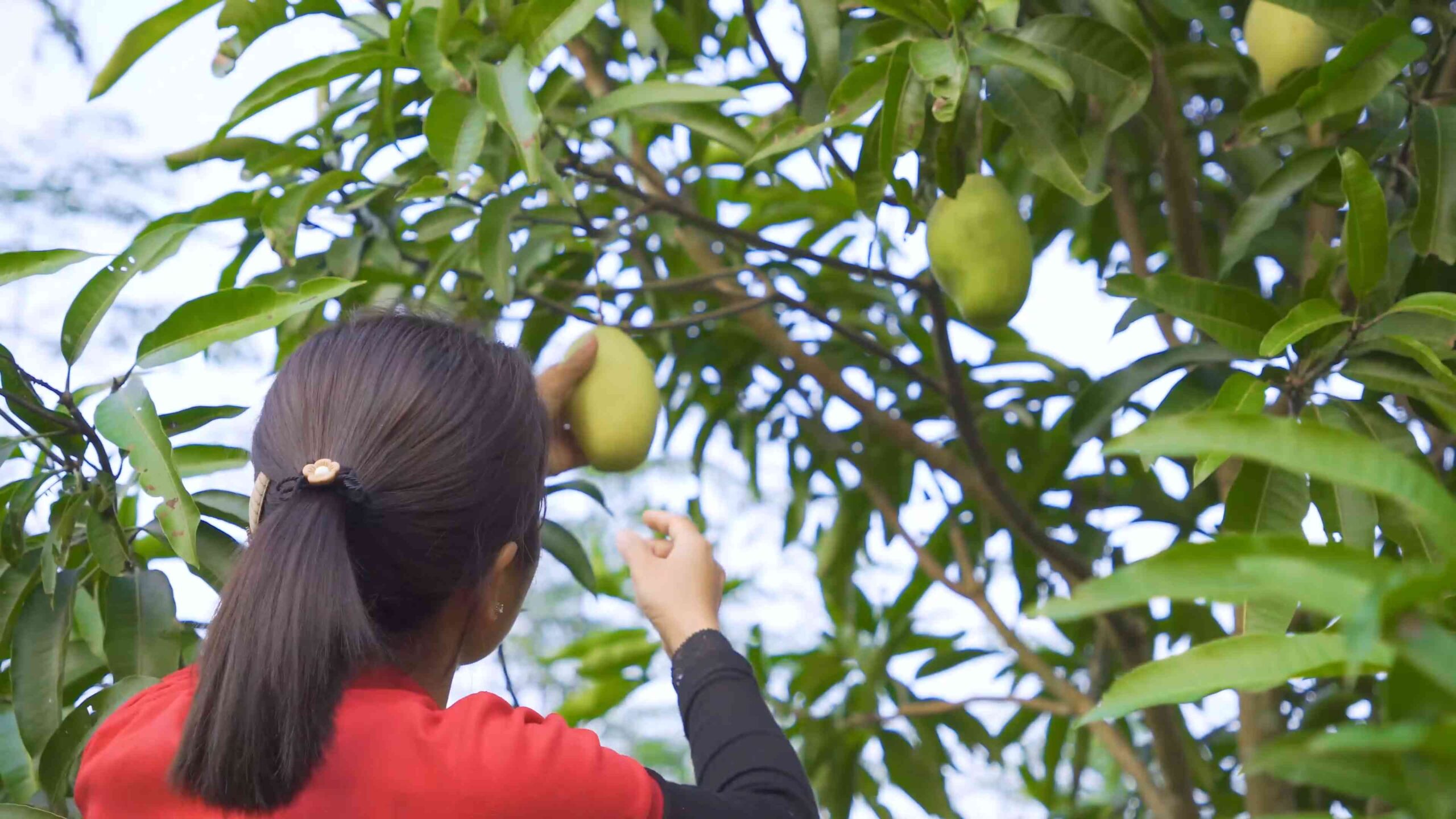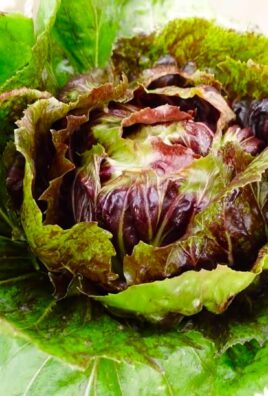Grow Mango Tree From Seed: Imagine biting into a juicy, sun-ripened mango, bursting with tropical flavor, and knowing you grew it yourself! Sounds like a dream, right? Well, it doesn’t have to be! This DIY guide will walk you through the surprisingly simple process of cultivating your very own mango tree from a single seed. Forget expensive nursery saplings; we’re going back to basics!
Mangoes have a rich history, deeply intertwined with cultures across South Asia for thousands of years. Revered for their delicious fruit and symbolic significance, mangoes represent prosperity, love, and fertility in many traditions. Now, you can bring a piece of that history into your own backyard!
Why bother learning how to grow mango tree from seed? Because it’s incredibly rewarding! Not only is it a cost-effective way to add a beautiful and productive tree to your landscape, but it also connects you to the natural world in a profound way. Plus, who wouldn’t want to impress their friends and family with homegrown mangoes? In this article, I’ll share my tried-and-true methods, ensuring you have the best chance of success. Get ready to embark on a fun and fulfilling gardening adventure!

Grow Your Own Mango Tree From Seed: A Step-by-Step Guide
Hey there, fellow plant enthusiasts! Ever dreamt of biting into a juicy, homegrown mango? Well, guess what? You can actually grow your own mango tree from seed, right in your backyard (or even in a large pot!). It might seem a little daunting, but trust me, it’s a rewarding experience. I’ve done it myself, and I’m here to guide you through the whole process. Let’s get started!
Choosing the Right Mango and Preparing the Seed
First things first, you need a mango! But not just any mango will do. Here’s what to look for:
* Variety Matters: Some mango varieties are polyembryonic, meaning they produce multiple seedlings from a single seed. These are generally easier to grow true to the parent tree. Examples include Tommy Atkins, Haden, and Kent (though these may still produce a single seedling). If you want a specific variety, try to find a polyembryonic one. If you don’t care about the exact variety, any ripe mango will work!
* Ripeness is Key: Choose a ripe, fragrant mango from a local market or grocery store. The riper, the better! This ensures the seed inside is mature and ready to germinate.
* Freshness Counts: The sooner you plant the seed after removing it from the mango, the higher your chances of success. Don’t let it dry out too much.
Now, let’s get that seed ready for planting:
1. Enjoy the Mango! Okay, this is the best part. Cut open the mango and enjoy the delicious fruit. Make sure to carefully remove all the flesh from the seed.
2. Clean the Seed: Rinse the seed thoroughly under running water to remove any remaining pulp. This will help prevent mold and rot.
3. Locate the Husk: You’ll notice that the seed is encased in a tough, fibrous husk. This husk needs to be carefully opened to get to the actual seed inside.
4. Opening the Husk (Carefully!): This is the trickiest part, so pay close attention. There are a few ways to do this, but I’ve found this method to be the most effective:
* Use a Sharp Knife: Carefully use a sharp knife (like a box cutter or utility knife) to make a shallow cut along the edge of the husk. Be extremely careful not to cut the seed inside! Think of it like you’re performing surgery.
* Pry it Open: Once you’ve made the cut, gently pry the husk open with your fingers or a flathead screwdriver. You might need to make a few more small cuts to get it open completely. The goal is to expose the seed inside without damaging it.
* Alternative Method (Less Risky): If you’re nervous about using a knife, you can try soaking the husk in water for a day or two. This will soften it and make it easier to open. However, this method can sometimes lead to mold growth, so keep a close eye on it.
5. Extract the Seed: Once the husk is open, carefully remove the seed. It will look like a large bean. Be gentle, as the seed is delicate and can be easily damaged.
6. Inspect the Seed: Check the seed for any signs of damage or rot. It should be plump and healthy-looking. Discard any seeds that are shriveled or discolored.
Germinating the Mango Seed
Now that you have your mango seed, it’s time to germinate it! There are a couple of ways to do this:
* Paper Towel Method: This is a popular and easy method for germinating seeds.
* Direct Planting: You can also plant the seed directly into a pot of soil.
I prefer the paper towel method because it allows you to monitor the seed’s progress and ensure it’s germinating properly. Here’s how to do it:
1. Dampen a Paper Towel: Moisten a paper towel with water. Make sure it’s damp but not soaking wet.
2. Wrap the Seed: Place the mango seed on the damp paper towel and fold the towel over it.
3. Place in a Plastic Bag: Put the wrapped seed in a plastic bag or container. This will help retain moisture.
4. Warm Location: Place the bag in a warm location, such as on top of your refrigerator or near a sunny window (but not in direct sunlight). The ideal temperature for germination is around 70-80°F (21-27°C).
5. Check Regularly: Check the seed every few days to make sure the paper towel is still damp. If it’s drying out, add a little more water.
6. Wait for Germination: Be patient! It can take anywhere from 1 to 4 weeks for the seed to germinate. You’ll know it’s germinating when you see a small root emerging from the seed.
Planting the Germinated Seed
Once your mango seed has germinated and has a root about an inch or two long, it’s time to plant it in soil.
1. Choose a Pot: Select a pot that is at least 6 inches in diameter and has drainage holes. Mango trees need plenty of room to grow, so don’t use a pot that’s too small.
2. Use Well-Draining Soil: Fill the pot with a well-draining potting mix. A mixture of potting soil, perlite, and vermiculite works well.
3. Plant the Seed: Gently plant the germinated seed in the pot, with the root facing down. Cover the seed with about an inch of soil.
4. Water Thoroughly: Water the soil thoroughly until water drains out of the drainage holes.
5. Warm and Sunny Location: Place the pot in a warm and sunny location. Mango trees need at least 6 hours of sunlight per day.
6. Keep the Soil Moist: Keep the soil consistently moist, but not waterlogged. Water when the top inch of soil feels dry to the touch.
Caring for Your Mango Seedling
Congratulations! You’ve successfully planted your mango seed. Now, it’s time to care for your seedling and help it grow into a healthy tree.
* Watering: Water your mango seedling regularly, especially during hot and dry weather. However, avoid overwatering, as this can lead to root rot.
* Fertilizing: Fertilize your mango seedling every few months with a balanced fertilizer. Follow the instructions on the fertilizer package.
* Pruning: Prune your mango seedling regularly to encourage branching and a strong structure. Remove any dead or damaged branches.
* Pest and Disease Control: Keep an eye out for pests and diseases. Common pests that affect mango trees include aphids, mealybugs, and scale. Treat any infestations promptly with an appropriate insecticide or fungicide.
* Repotting: As your mango tree grows, you’ll need to repot it into a larger container. Repot it every year or two, or when the roots start to circle the bottom of the pot.
* Protect from Frost: Mango trees are sensitive to frost. If you live in an area with cold winters, you’ll need to protect your mango tree from frost by bringing it indoors or covering it with a blanket.
Patience is Key
Growing a mango tree from seed takes time and patience. It can take several years for your tree to start producing fruit. However, the reward of harvesting your own homegrown mangoes is well worth the wait.
Important Note: Mango trees grown from seed may not produce fruit that is identical to the parent tree. This is because mango trees are often grafted to ensure consistent fruit quality. However, even if your tree doesn’t produce the exact same type of mango, it will still be a delicious and rewarding experience.
So, there you have it! A comprehensive guide to growing your own mango tree from seed. I hope you found this helpful. Happy planting, and I wish you all the best in your mango-growing journey!

Conclusion
So, there you have it! Cultivating your own mango tree from seed isn’t just a gardening project; it’s an investment in the future, a connection to nature, and a source of immense satisfaction. While it requires patience and a little bit of effort, the reward of harvesting your own homegrown mangoes is well worth it. This DIY trick transforms a simple seed, often discarded, into a vibrant, fruit-bearing tree, bringing a touch of the tropics right to your backyard.
Think about the possibilities! Imagine sharing the sweet, juicy fruits of your labor with friends and family, knowing that you nurtured this tree from its very beginning. Or perhaps you’ll experiment with grafting different mango varieties onto your seedling, creating a unique and personalized mango tree tailored to your specific taste preferences.
Don’t be intimidated by the process. Even if you’re a novice gardener, the steps are straightforward and easy to follow. Remember to provide your seedling with plenty of sunlight, well-draining soil, and consistent watering. Keep an eye out for any signs of pests or diseases, and address them promptly.
We encourage you to embark on this exciting journey of growing your own mango tree from seed. It’s a fantastic way to learn about plant life cycles, connect with nature, and enjoy the delicious fruits of your labor. And remember, even if your first attempt isn’t perfect, don’t give up! Gardening is all about learning and experimenting.
We’re confident that with a little patience and care, you’ll be enjoying homegrown mangoes in no time. So, grab a mango seed, follow our guide, and get ready to experience the joy of growing your own tropical fruit.
We’d love to hear about your experiences! Share your progress, photos, and any tips or variations you discover along the way in the comments below. Let’s create a community of mango enthusiasts and learn from each other’s successes and challenges. Happy gardening! This **DIY mango tree** project is a rewarding experience for any gardener.
Frequently Asked Questions (FAQs)
1. What type of mango seed is best for growing a tree?
The best type of mango seed to use is one from a mature, ripe mango that you enjoyed eating. The fresher the seed, the higher the chances of successful germination. Polyembryonic mango varieties (those that produce multiple seedlings from a single seed) are generally preferred because they are more likely to produce a tree that is true to the parent variety. Some common polyembryonic varieties include Tommy Atkins, Haden, and Kent. However, even monoembryonic varieties (those that produce only one seedling) can be successfully grown, although the fruit may not be exactly the same as the parent mango.
2. How long does it take for a mango seed to germinate?
Germination time can vary depending on several factors, including the freshness of the seed, the temperature, and the moisture levels. Generally, it takes anywhere from 1 to 4 weeks for a mango seed to germinate. Soaking the seed in water for 24 hours before planting can help speed up the process. Maintaining a warm and humid environment is also crucial for successful germination.
3. What kind of soil is best for growing a mango tree?
Mango trees thrive in well-draining soil that is rich in organic matter. A slightly acidic to neutral pH (6.0 to 7.0) is ideal. You can use a potting mix specifically formulated for fruit trees, or create your own mix by combining equal parts of garden soil, compost, and perlite or sand. Good drainage is essential to prevent root rot, which is a common problem for mango trees.
4. How much sunlight does a mango tree need?
Mango trees require plenty of sunlight to grow and produce fruit. They need at least 6 to 8 hours of direct sunlight per day. If you are growing your mango tree indoors, place it near a sunny window or use grow lights to supplement the natural light. Insufficient sunlight can lead to stunted growth and reduced fruit production.
5. How often should I water my mango tree?
Water your mango tree regularly, especially during the growing season (spring and summer). Keep the soil consistently moist, but not waterlogged. Allow the top inch of soil to dry out between waterings. Reduce watering during the dormant season (fall and winter). The frequency of watering will also depend on the climate and the type of soil.
6. When will my mango tree start producing fruit?
Mango trees grown from seed typically take 3 to 6 years to start producing fruit. Grafted mango trees, on the other hand, can start bearing fruit in as little as 1 to 2 years. The time it takes for a mango tree to fruit also depends on the variety, the climate, and the overall health of the tree.
7. How do I protect my mango tree from pests and diseases?
Regularly inspect your mango tree for signs of pests and diseases. Common pests include aphids, mealybugs, and scale insects. Diseases can include anthracnose, powdery mildew, and root rot. Treat any infestations or infections promptly with appropriate insecticides or fungicides. Good air circulation and proper watering can help prevent many diseases.
8. Can I grow a mango tree in a pot?
Yes, you can grow a mango tree in a pot, especially if you live in a climate with cold winters. Choose a large pot with drainage holes and use a well-draining potting mix. Dwarf mango varieties are best suited for container growing. Be sure to provide your potted mango tree with plenty of sunlight and water, and fertilize it regularly. You may need to repot your mango tree every few years as it grows.
9. What kind of fertilizer should I use for my mango tree?
Use a balanced fertilizer specifically formulated for fruit trees. A fertilizer with an NPK ratio of 10-10-10 or 14-14-14 is a good choice. Fertilize your mango tree regularly during the growing season, following the instructions on the fertilizer package. Avoid over-fertilizing, as this can damage the tree.
10. How do I prune my mango tree?
Pruning is important for maintaining the shape and health of your mango tree. Prune your mango tree in late winter or early spring, before new growth begins. Remove any dead, damaged, or crossing branches. Prune to create an open canopy that allows sunlight to penetrate the center of the tree. You can also prune to control the size and shape of the tree.
11. What are some common problems when growing mango trees from seed?
Some common problems include failure to germinate, slow growth, susceptibility to pests and diseases, and a long time to fruit production. Providing the right conditions, such as warm temperatures, adequate moisture, and plenty of sunlight, can help prevent many of these problems. Grafting can also help to overcome some of the challenges of growing mango trees from seed.
12. Can I grow a mango tree indoors year-round?
While it’s possible to grow a mango tree indoors, it can be challenging to provide the ideal conditions for fruit production. Mango trees need a lot of sunlight, which can be difficult to provide indoors, especially during the winter months. You may need to supplement with grow lights. Also, indoor mango trees may be more susceptible to pests and diseases. However, with proper care and attention, you can successfully grow a mango tree indoors and enjoy its beautiful foliage. Remember that growing a **DIY mango tree** requires patience and dedication.





Leave a Comment